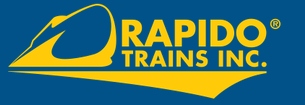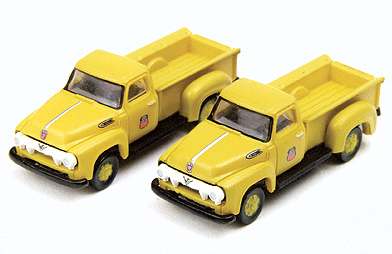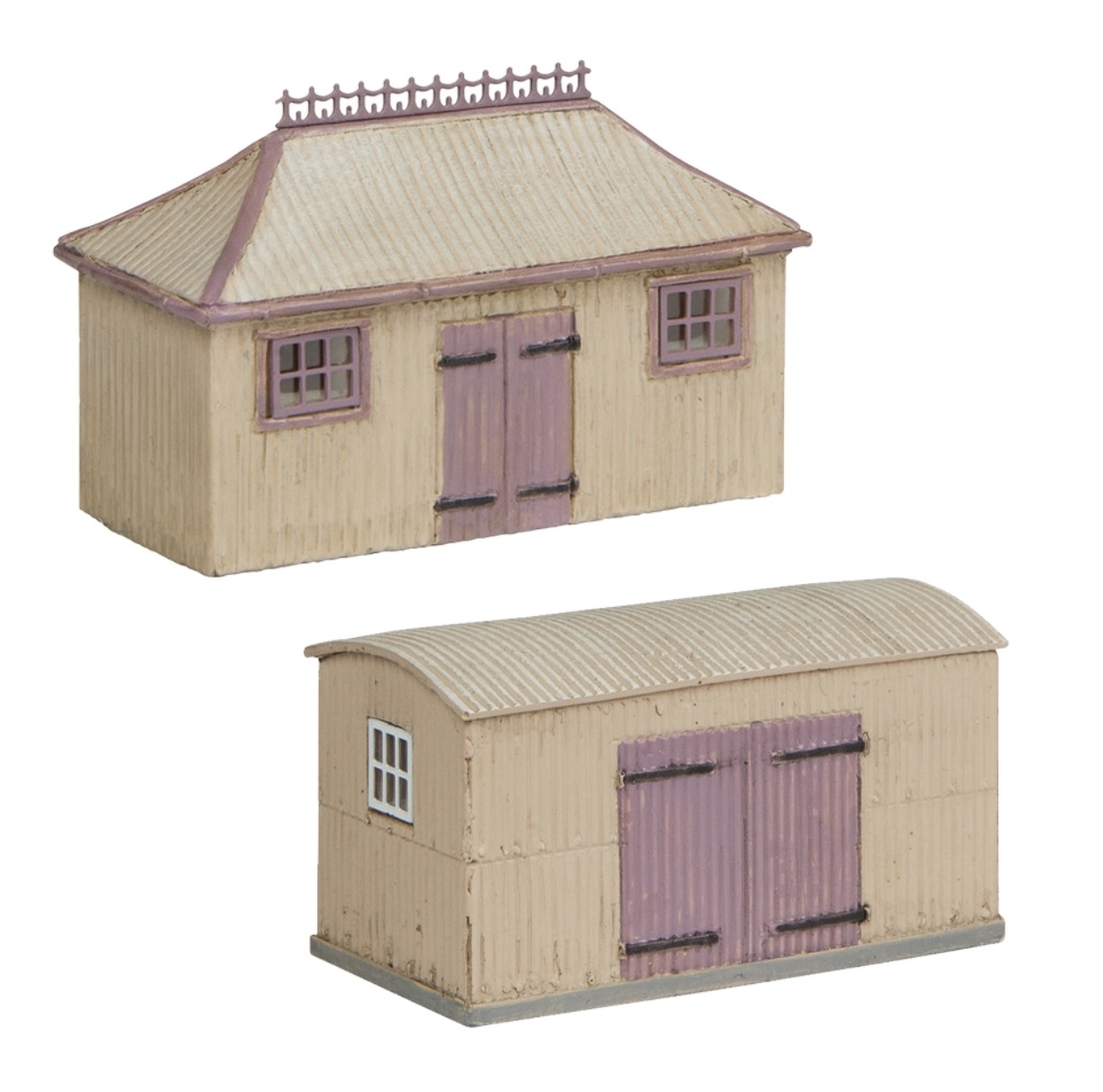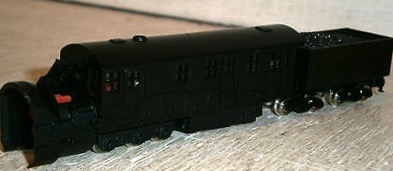Body Style Information: Available in fully, partially, or non-skirted versions, with or without roof hatches (as appropriate), with GE or Frigidaire air conditioning equipment (as appropriate), the Rapido Trains Osgood Bradley Lightweight 10-Window Coaches have complete and accurate interior detail (including bulkhead mirrors), correct, tubular cross section flush windows with painted frames, full under-body detailing (with separate air, steam, and electrical lines), brake hoses and end gates, exquisite 41-E trucks with chain detail and metal RP25 wheel-sets, Easy-Peasy battery operating lighting, factory installed, separate grab irons, and accurate paint and lettering schemes.
Precisely scaled from the original factory blueprints, with several car numbers for each paint scheme offered, the models have a minimum operating radius of twenty-four inches.
Prototype Information: Designed by Walter Dorwin Teague in the early 1930s, beginning in 1934, the attractive, lightweight, rounded aircraft style bodied Pullman Standard Osgood Bradley passenger cars were manufactured in Pullman Standard's Osgood Bradley plant in Worcester, Connecticut.
The line's first truly lightweight coaches, the New York New Haven and Hartford Railroad was the largest customer of these 10-window cars.
Osgood Bradley's were used on long distance and local passenger trains and saw continued use well into the 1970s.
Precisely scaled from the original factory blueprints, with several car numbers for each paint scheme offered, the models have a minimum operating radius of twenty-four inches.
Prototype Information: Designed by Walter Dorwin Teague in the early 1930s, beginning in 1934, the attractive, lightweight, rounded aircraft style bodied Pullman Standard Osgood Bradley passenger cars were manufactured in Pullman Standard's Osgood Bradley plant in Worcester, Connecticut.
The line's first truly lightweight coaches, the New York New Haven and Hartford Railroad was the largest customer of these 10-window cars.
Osgood Bradley's were used on long distance and local passenger trains and saw continued use well into the 1970s.
Prototype Information: In 1934 Pullman-Standard’s Osgood Bradley plant in Worcester, Massachusets began construction of one of the first true lightweight coaches for the New York, New Haven & Hartford Railroad. These cars were used on both long distance and local trains and served well into the 1970’s.
For clarity’s sake, let’s get the nomenclature right. Due to copyright issues, we’re not allowed to call these cars by their popular name. The popular name for the cars, named after an A.C. Gilbert S scale model in the 1940s, was coined by Arthur Dubin in his book More Classic Trains in 1974. In the interests of historical accuracy, let’s return these cars to their original name: they are Pullman-Standard’s lightweight Osgood Bradley coaches, or Osgood Bradley coaches for short.
For clarity’s sake, let’s get the nomenclature right. Due to copyright issues, we’re not allowed to call these cars by their popular name. The popular name for the cars, named after an A.C. Gilbert S scale model in the 1940s, was coined by Arthur Dubin in his book More Classic Trains in 1974. In the interests of historical accuracy, let’s return these cars to their original name: they are Pullman-Standard’s lightweight Osgood Bradley coaches, or Osgood Bradley coaches for short.
Road/Company Information:  The New York, New Haven and Hartford Railroad (reporting mark NH), commonly known as the New Haven, was a railroad that operated in New England from 1872 to 1968, dominating the region's rail traffic for the first half of the 20th century.
The New York, New Haven and Hartford Railroad (reporting mark NH), commonly known as the New Haven, was a railroad that operated in New England from 1872 to 1968, dominating the region's rail traffic for the first half of the 20th century.
Beginning in the 1890s and accelerating in 1903, New York banker J. P. Morgan sought to monopolize New England transportation by arranging the NH's acquisition of 50 companies, including other railroads and steamship lines, and building a network of electrified trolley lines that provided interurban transportation for all of southern New England. By 1912, the New Haven operated more than 2,000 miles (3,200 km) of track, with 120,000 employees, and practically monopolized traffic in a wide swath from Boston to New York City.
This quest for monopoly angered Progressive Era reformers, alienated public opinion, resulted in high prices for acquisitions, and increased construction costs. Debt soared from $14 million in 1903 to $242 million in 1913, even as the advent of automobiles, trucks and buses reduced railroad profits. Also in 1913, the federal government filed an anti-trust lawsuit that forced the NH to divest its trolley systems.
The line became bankrupt in 1935, was reorganized and reduced in scope, went bankrupt again in 1961, and in 1969 was merged with the Penn Central system, formed a year earlier by the merger of the also bankrupt New York Central Railroad and Pennsylvania Railroad; Already a poorly conceived merger, Penn Central proceeded to go bankrupt in 1970, becoming the largest bankruptcy in the U.S. until the Enron Corporation superseded it in 2001. The remnants of the system now comprise Metro-North Railroad's New Haven Line, (parts of) Amtrak's Northeast Corridor, Shore Line East, parts of the MBTA, and numerous freight operators such as CSX and the Providence and Worcester Railroad. The majority of the system is now owned publicly by the states of Connecticut, Rhode Island, and Massachusetts.
Read more on Wikipedia and New Haven Railroad Historical and Technical Association, Inc.

Beginning in the 1890s and accelerating in 1903, New York banker J. P. Morgan sought to monopolize New England transportation by arranging the NH's acquisition of 50 companies, including other railroads and steamship lines, and building a network of electrified trolley lines that provided interurban transportation for all of southern New England. By 1912, the New Haven operated more than 2,000 miles (3,200 km) of track, with 120,000 employees, and practically monopolized traffic in a wide swath from Boston to New York City.
This quest for monopoly angered Progressive Era reformers, alienated public opinion, resulted in high prices for acquisitions, and increased construction costs. Debt soared from $14 million in 1903 to $242 million in 1913, even as the advent of automobiles, trucks and buses reduced railroad profits. Also in 1913, the federal government filed an anti-trust lawsuit that forced the NH to divest its trolley systems.
The line became bankrupt in 1935, was reorganized and reduced in scope, went bankrupt again in 1961, and in 1969 was merged with the Penn Central system, formed a year earlier by the merger of the also bankrupt New York Central Railroad and Pennsylvania Railroad; Already a poorly conceived merger, Penn Central proceeded to go bankrupt in 1970, becoming the largest bankruptcy in the U.S. until the Enron Corporation superseded it in 2001. The remnants of the system now comprise Metro-North Railroad's New Haven Line, (parts of) Amtrak's Northeast Corridor, Shore Line East, parts of the MBTA, and numerous freight operators such as CSX and the Providence and Worcester Railroad. The majority of the system is now owned publicly by the states of Connecticut, Rhode Island, and Massachusetts.
Read more on Wikipedia and New Haven Railroad Historical and Technical Association, Inc.
Brand/Importer Information: Rapido Trains Inc. is a high-end manufacturer of model trains and accessories in HO, OO and N (North American 1:160 and British 1:148) scales. The firm's mission is to recreate the entire rail travel experience, from fully-detailed interiors and under-frames on models to fully-wired telephone poles for model railroads. The name RAPIDO was introduced by Canadian National in 1965 to headline the railway's high-speed intercity passenger services. Until the mid-1980s, RAPIDO stood for fast schedules, frequent trains, and superb service. Today, Rapido Trains continues the RAPIDO concept with state-of-the-art models and attention to fine detail. This company is not related to the venerable (and now defunct) German manufacturer Arnold Rapido, nor the present-day Arnold (which is owned by the United Kingdom's Hornby), Canadian based Rapido Trains was founded in 2003.
Item created by: nscalemodeler160 on 2016-08-04 19:13:35. Last edited by gdm on 2019-08-30 10:08:14
If you see errors or missing data in this entry, please feel free to log in and edit it. Anyone with a Gmail account can log in instantly.
If you see errors or missing data in this entry, please feel free to log in and edit it. Anyone with a Gmail account can log in instantly.









